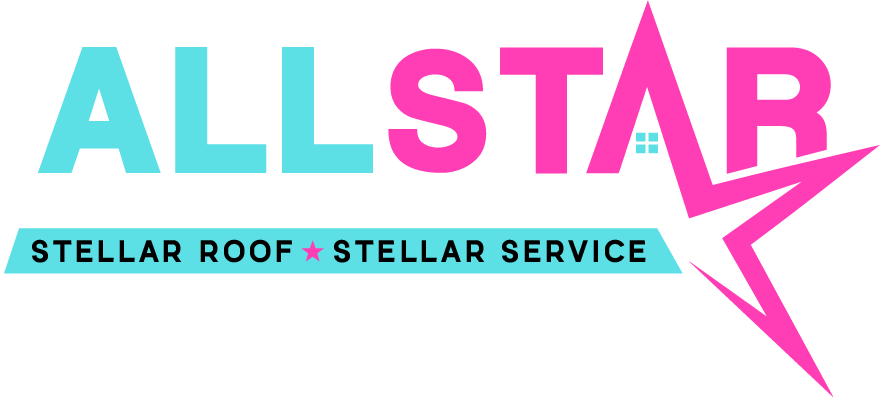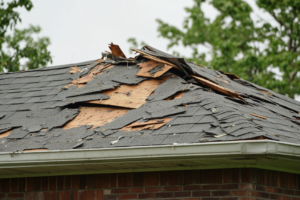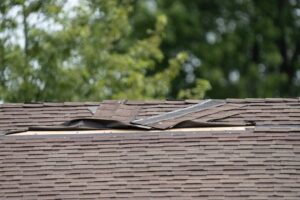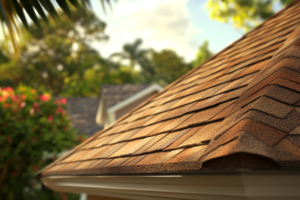A leaking roof can lead to serious problems, from water damage and mold growth to structural issues that compromise your home’s safety. Identifying the common causes of roof leaks early can save you time, money, and frustration.
Understanding what leads to roof leaks allows homeowners to take preventative steps and address minor issues before they escalate into major damage. In this guide, we’ll explore the most frequent reasons roofs develop leaks, how to spot warning signs, and what you can do to keep your roof in top condition.
1. Damaged or Missing Shingles
One of the most common causes of roof leaks is damaged or missing shingles. Over time, shingles can crack, curl, or be blown off by high winds, exposing the roof’s underlayment and allowing water to seep in.
Signs to Look For:
✔ Missing or dislodged shingles after a storm
✔ Cracked, curling, or warped shingles
✔ Granules collecting in gutters (a sign of aging shingles)
How to Prevent It:
✔ Schedule regular roof inspections to catch issues early.
✔ Replace damaged shingles promptly to maintain roof integrity.
✔ Invest in high-quality, wind-resistant shingles for better durability.
2. Clogged or Damaged Gutters
Gutters play a crucial role in directing water away from your roof. If they’re clogged with leaves, dirt, or debris, water can pool and seep under shingles, leading to leaks. Damaged or improperly installed gutters can also cause water overflow, damaging both the roof and the foundation.
Signs to Look For:
✔ Water spilling over gutters during rainstorms
✔ Sagging or detached gutters
✔ Mold or mildew growth near the roofline
How to Prevent It:
✔ Clean gutters at least twice a year (spring and fall).
✔ Install gutter guards to reduce debris buildup.
✔ Ensure downspouts direct water away from your home’s foundation.
The Environmental Protection Agency (EPA) emphasizes proper drainage to prevent water-related structural damage.

3. Flashing Issues Around Chimneys, Vents, and Skylights
Flashing is the thin metal material that seals joints around chimneys, vents, skylights, and roof valleys. When flashing deteriorates, cracks, or becomes loose, water can seep into vulnerable areas of the roof.
Signs to Look For:
✔ Rusted, cracked, or missing flashing
✔ Water stains on ceilings or walls near chimneys or skylights
✔ Visible gaps between flashing and roofing materials
How to Prevent It:
✔ Inspect flashing annually and after heavy storms.
✔ Reapply roofing sealant to reinforce aging flashing.
✔ Replace rusted or damaged flashing before leaks develop.
4. Cracked or Worn Roof Vents
Roof vents help regulate airflow in your attic, preventing moisture buildup. However, the rubber boots or seals around vents can crack over time, allowing rainwater to seep into your home.
Signs to Look For:
✔ Water stains around roof vents inside your attic
✔ Cracks or gaps around vent pipe boots
✔ Mold growth near vent openings
How to Prevent It:
✔ Check vents regularly for cracks or deterioration.
✔ Replace damaged vent boots or apply waterproof sealant.
✔ Ensure vents are properly installed and secured.
5. Ice Dams in Cold Weather
In colder climates, ice dams form when snow melts on a warm roof and refreezes at the edges, preventing proper drainage. This trapped water can back up under shingles, leading to leaks and interior damage.
Signs to Look For:
✔ Icicles forming along the roofline
✔ Water stains on ceilings or walls during winter
✔ Ice buildup in gutters and downspouts
How to Prevent It:
✔ Improve attic insulation and ventilation to prevent uneven heating.
✔ Use a roof rake to remove excess snow before it melts.
✔ Install heating cables along the eaves to prevent ice formation.
The National Weather Service (NWS) advises homeowners in snow-prone areas to take preventive steps against ice damming.
6. Poor Attic Ventilation and Condensation Buildup
An improperly ventilated attic can lead to excessive heat and moisture buildup, which weakens the roof’s structure and causes leaks over time. Condensation from warm indoor air can also contribute to mold growth and wood rot.
Signs to Look For:
✔ Peeling paint or mold growth in the attic
✔ Excessive heat buildup in the summer
✔ Moisture accumulation on rafters or insulation
How to Prevent It:
✔ Install soffit and ridge vents to improve airflow.
✔ Use attic fans to regulate temperature and moisture.
✔ Insulate properly to prevent heat transfer from living spaces.
7. Skylight Leaks
Skylights are a beautiful addition to any home, but if improperly installed or maintained, they can become a source of roof leaks. Seals around skylights may degrade over time, allowing water to seep through.
Signs to Look For:
✔ Water pooling around skylight frames
✔ Condensation between skylight panes
✔ Visible cracks in the skylight glass or sealant
How to Prevent It:
✔ Inspect skylight seals annually for wear and tear.
✔ Keep debris off skylights to prevent pooling water.
✔ Reapply waterproofing sealant as needed.

8. Aging Roof Materials
Over time, even the best roofing materials degrade due to exposure to sun, wind, rain, and fluctuating temperatures. An older roof is more susceptible to leaks and should be monitored for signs of deterioration.
Signs to Look For:
✔ Shingles that appear brittle, cracked, or curling
✔ Frequent repairs needed in different roof areas
✔ Roof age exceeding 20-25 years for asphalt shingles
How to Prevent It:
✔ Schedule regular inspections to assess roof health.
✔ Plan for roof replacement before major damage occurs.
✔ Use high-quality materials when replacing your roof.
Protect Your Home from Roof Leaks with Expert Help
A leaking roof can lead to costly damage, but catching issues early can save you time and money. By understanding the common causes of roof leaks and taking preventive measures, you can extend the lifespan of your roof and protect your home.
If you’ve noticed signs of a roof leak, don’t wait until the problem worsens—get a free inspection now. Our team at Allstar Restoration Services is here to assess your roof, provide expert repairs, and ensure your home stays protected.




